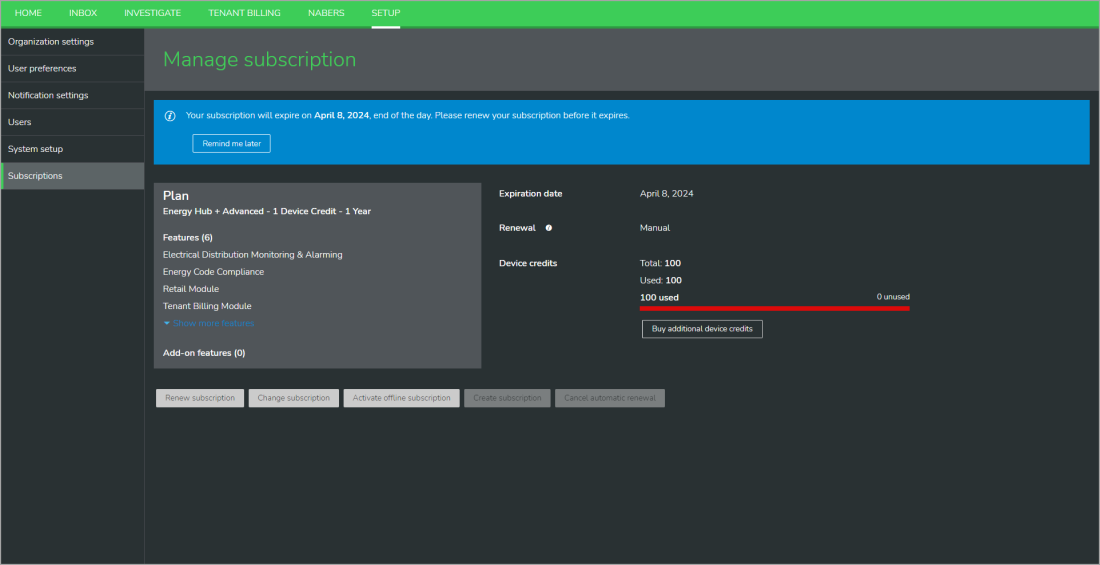Functions and user interfaces (UIs)
Overview
Energy Hub is an energy information system. It aggregates and analyzes energy system data from monitoring devices in your facility. You can access Energy Hub with a web application on your personal computer or with a mobile app on your mobile device.
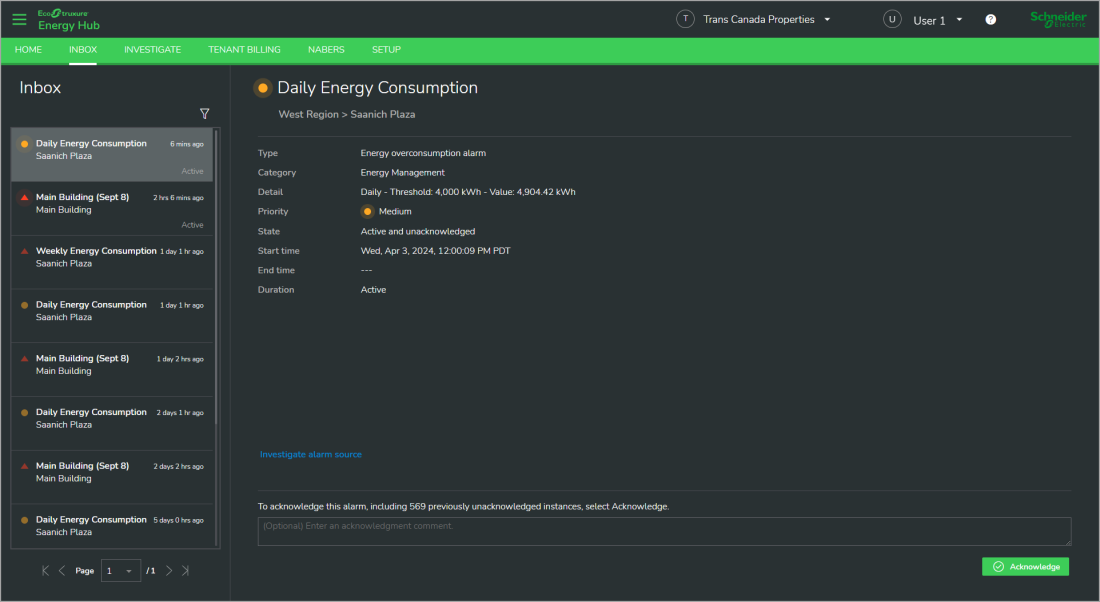
The following is a high-level tour of the main functions and user interfaces of Energy Hub:
NOTE: The functionality displayed in this topic might not be the same as what you see for your organization. Your Energy Hub feature plan subscription determines which functions and features are available for your organization. For feature plan details, see Feature plans.
The main application window has the following components:
The application header contains an options menu with "About" information, Schneider Electric and Energy Hub logos, an organization selector, a user selector, and a link to the Energy Hub support center.

The main navigation bar shows the Energy Hub functions and features you can access. The following options exist: Home, Inbox, Investigate, Tenant Billing, NABERS, Setup.
NOTE: The NABERS rating functionality in Energy Hub is only available to users in Australia.

The content panel displays context specific data and information for Energy Hub features.

Example
The following shows an Energy Hub main application window UI in dark mode:

Home displays high-level summary information about the energy performance of your organization.
Example
The following shows an Energy Hub Home UI in dark mode:
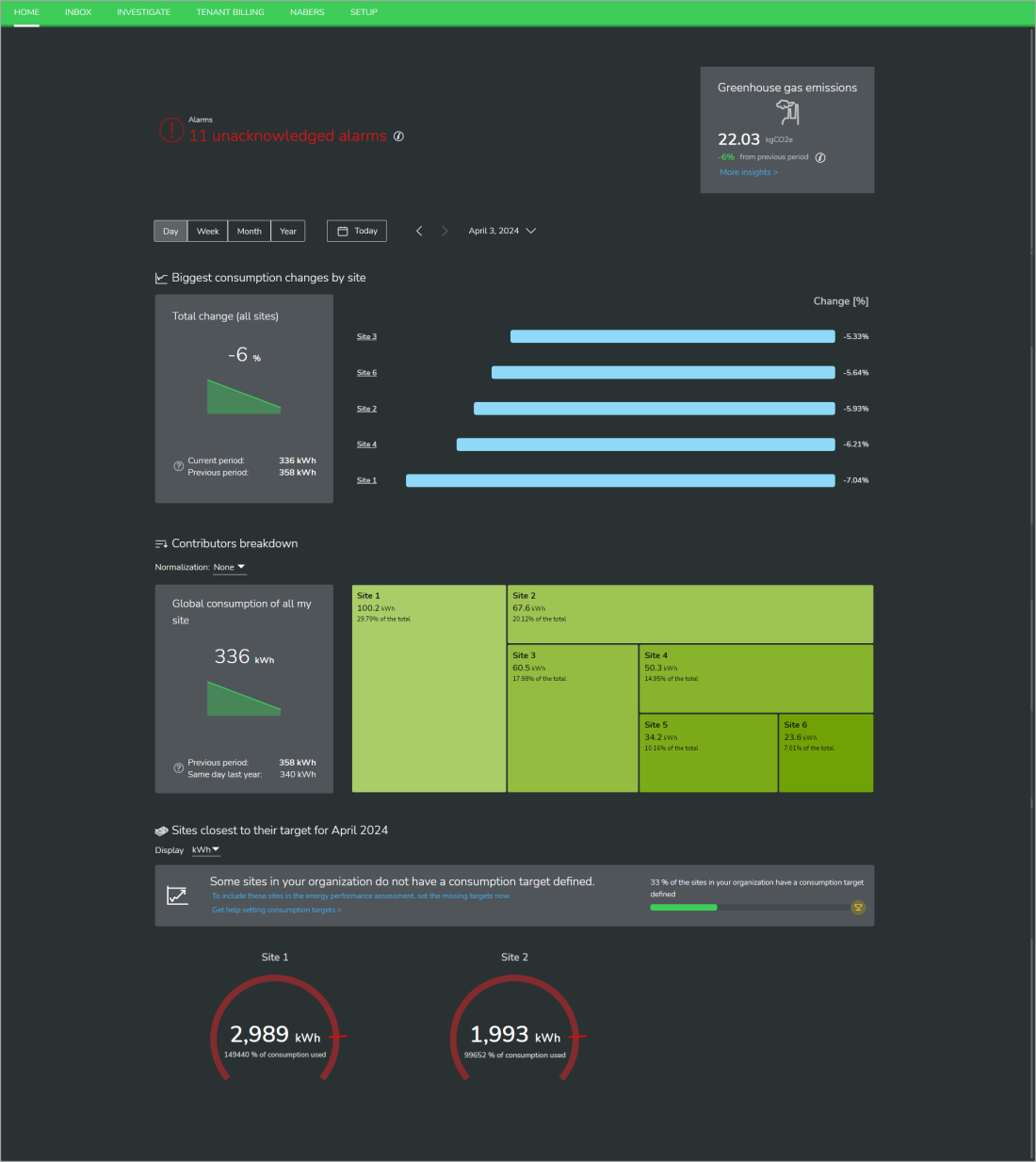
Inbox displays alarm information for the entire organization, based on the notification settings. The Inbox UI includes a navigation panel on the left for viewing and selecting alarms, and a display panel on the right to show details for the selected alarm.
Example
The following shows an Energy Hub Inbox UI in dark mode:

Investigate displays energy system data and information. The Investigate UI includes a toolbar with controls, a navigation panel on the left for selecting a location or equipment, a display panel in the center to show the data, and an information panel on the right with details for the selected location or equipment.
Example
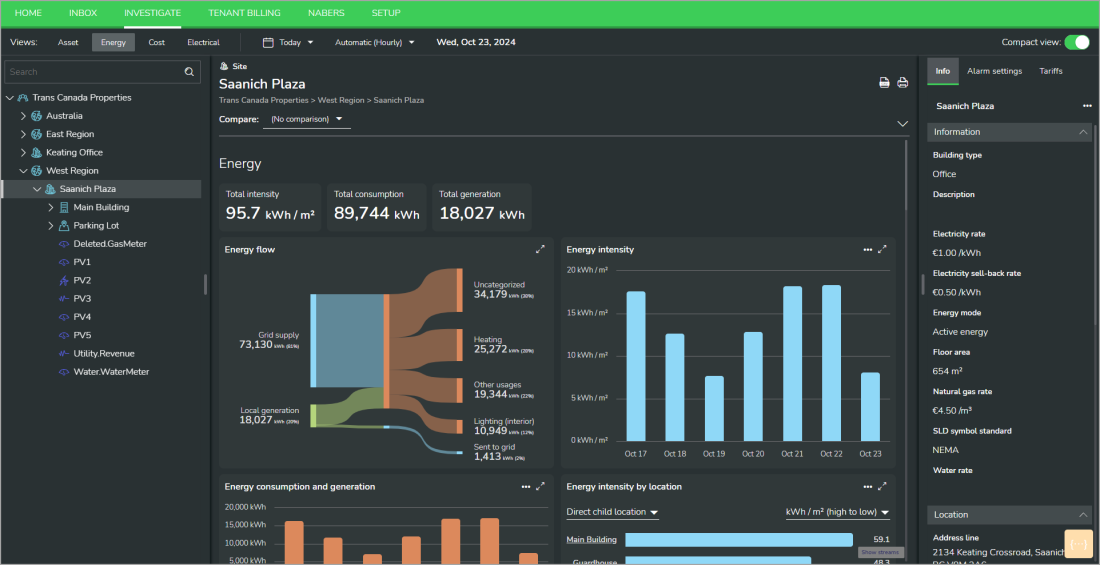
Toolbar
The toolbar includes a view selector, a date range selector, an aggregation interval selector, and a display type control.
NOTE: Some of the toolbar controls are only available in certain information views.

- The view selector sets the information view that is displayed. For details on information views, see Information views.
- The date range selector sets the time range for the displayed energy system data. For details on the date range selector, see Date range selector
- The aggregation interval selector sets the aggregation interval for the energy data, for example, hourly or daily. For details on the aggregation selector, see Aggregation selector
- The display type control switches between an expanded and a compact view of the data displays on the page.
Navigation panel
The navigation panel shows the organization tree with its locations, equipment, and monitoring devices. Selecting an item in the organization tree displays its information in the display panel and the information panel.
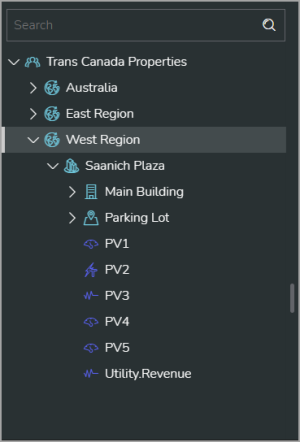
Display panel
The display panel shows energy system data based on the information view selected in the view selector. The following views exist: Asset, Energy, Electrical.
The Asset view shows equipment (asset) related data, such as alarms, equipment status, and electrical data trends for the item selected in the navigation panel. The type of data that is displayed depends on the selected item. For information on which data is available for locations, equipment, and monitoring devices, see Data displays.
Example
The following shows the Asset view UI in dark mode:
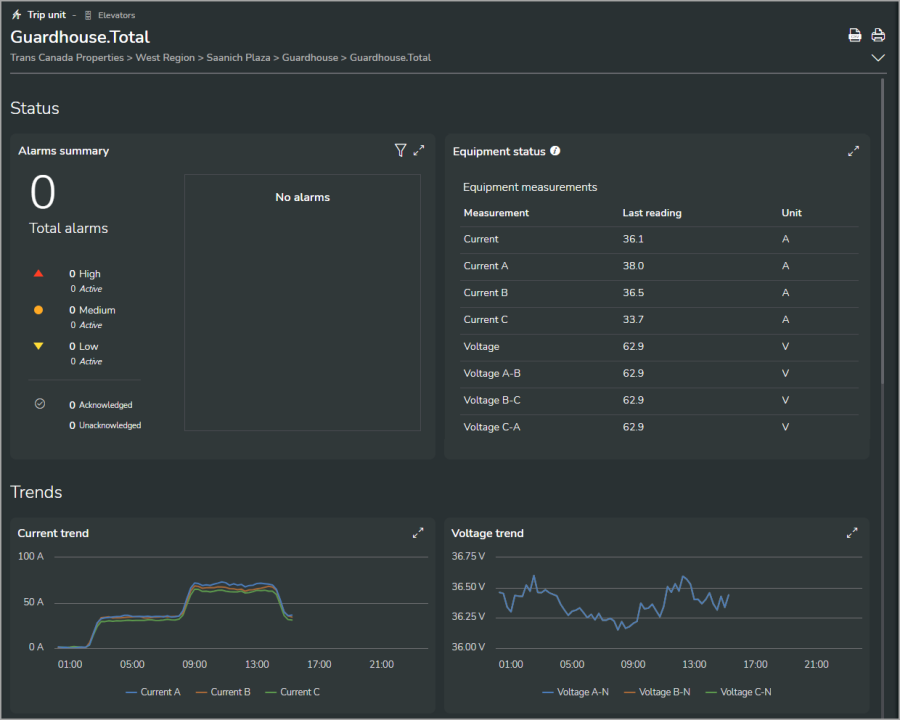
The Energy view shows energy consumption and production, power demand, water and gas consumption, and advanced analysis, such as consumption normalized by degree days for the item selected in the navigation panel. The type of data that is displayed depends on the selected item. For information on which data is available for locations, equipment, and monitoring devices, see Data displays.
Example
The following shows the Energy view UI in dark mode:

The Cost view shows the financial impact of commodity and energy consumption and production for the item selected in the navigation panel.
The following shows a Cost view example (shown in dark mode):

The Electrical view shows electrical single-line diagrams for the sites in your organization.
Example
The following shows the Electrical view UI in dark mode:
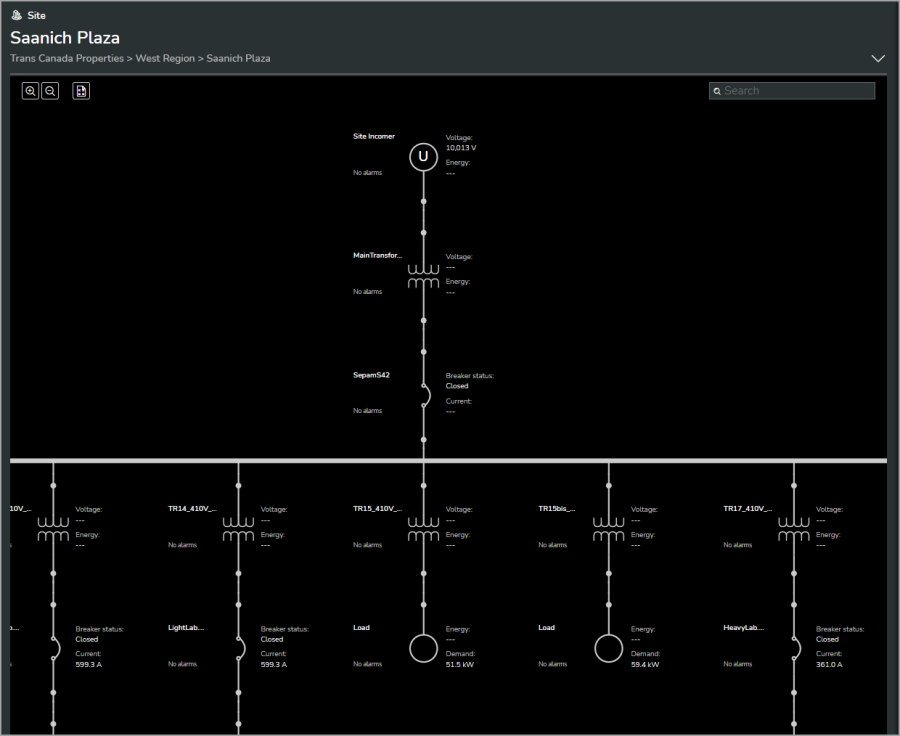
Information panel
The information panel shows meta data related to the item selected in the organization tree, such as settings, descriptions, or address information.
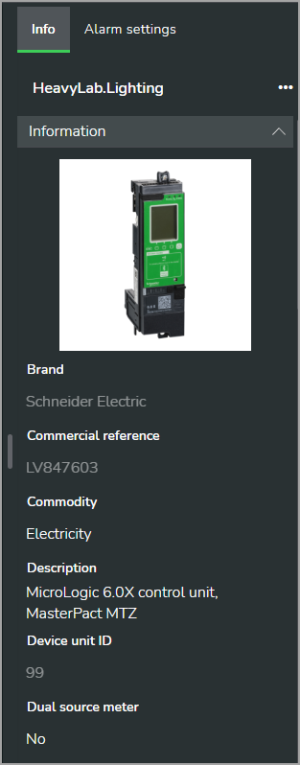
Tenant Billing gives access to the tenant energy billing functionality in Energy Hub. The Tenant Billing UI includes a navigation panel on the left for creating and managing tenant bill runs, and a display panel on the right to show details for the selected bill run.
Example
The following shows an Energy Hub Tenant Billing UI in dark mode:

NABERS gives access to the NABERS energy for office buildings rating system functionality in Energy Hub. The NABERS UI includes a navigation panel on the left for adding and managing NABERS buildings, and a display panel on the right to show details for the selected building.
Example
The following shows an Energy Hub NABERS UI in dark mode:
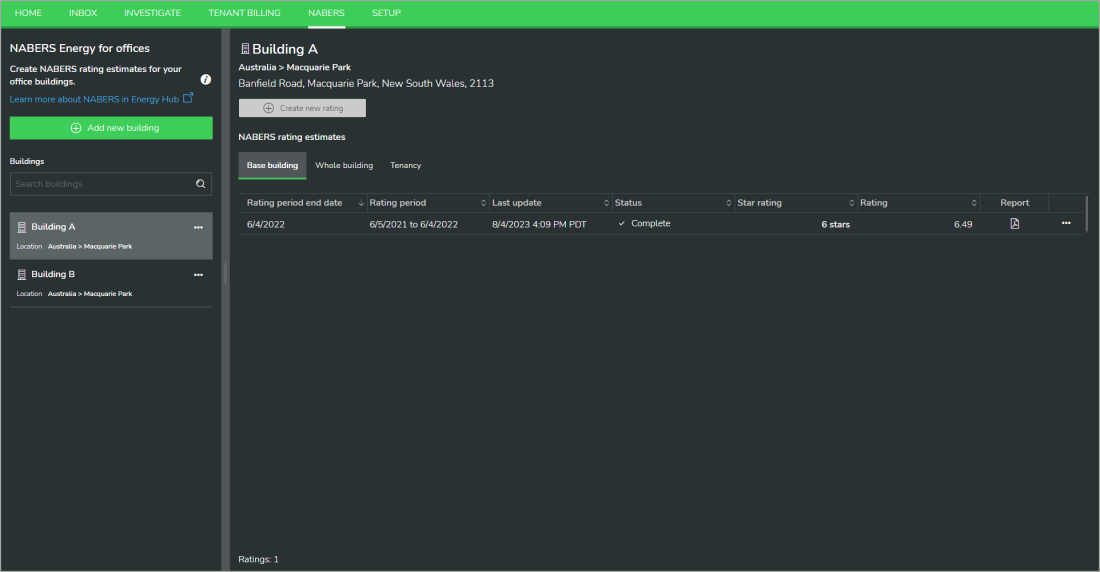
Setup gives access to configuration and settings in Energy Hub. The Setup UI includes a navigation panel on the left for selecting a setup option, and a display panel on the right to show details for the selected setup option. The following setup options exist: Organization settings, User preferences, Notification settings, Users, System setup, Subscriptions.
Organization settings determine the country and units of measurement for your organization in Energy Hub.
Example
The following shows the organization settings UI in dark mode:
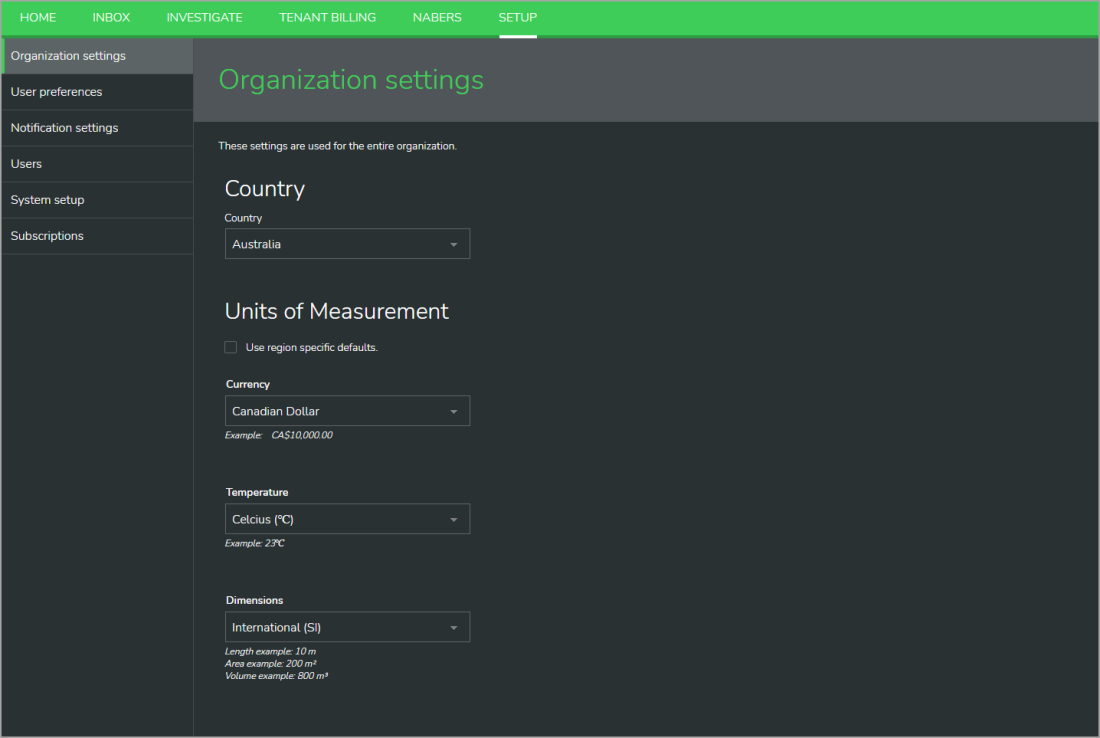
User preferences determine the language and data formats for your user account in Energy Hub.
Example
The following shows the user preferences UI in dark mode:
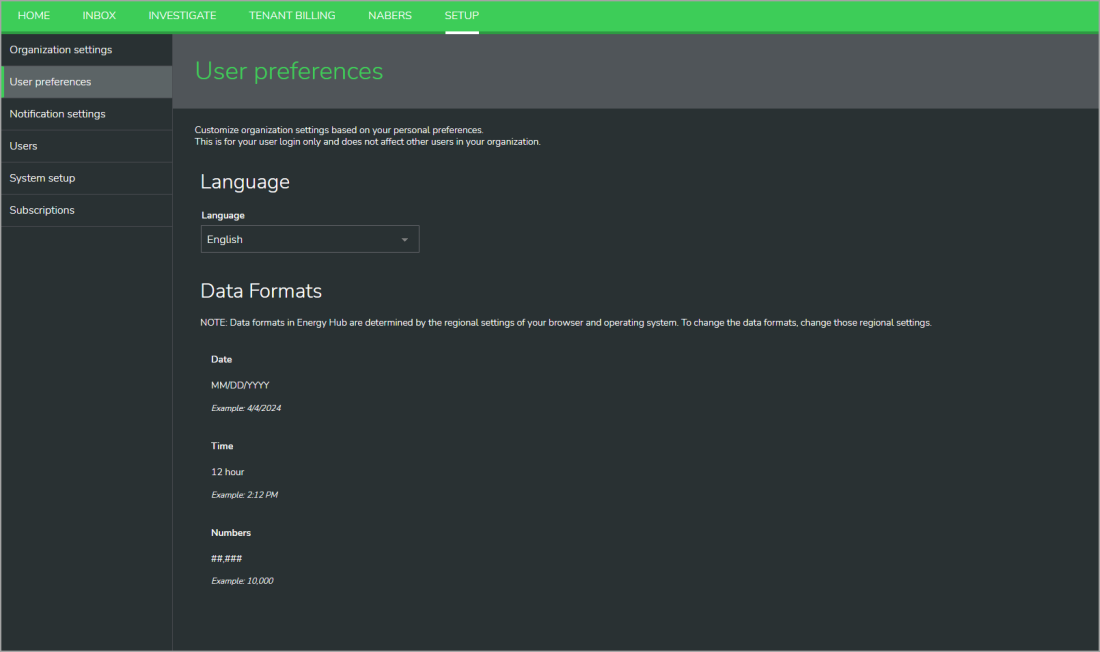
Notification settings determine the alarm notification preferences for your user account in Energy Hub.
Example
The following shows the notification settings UI in dark mode:
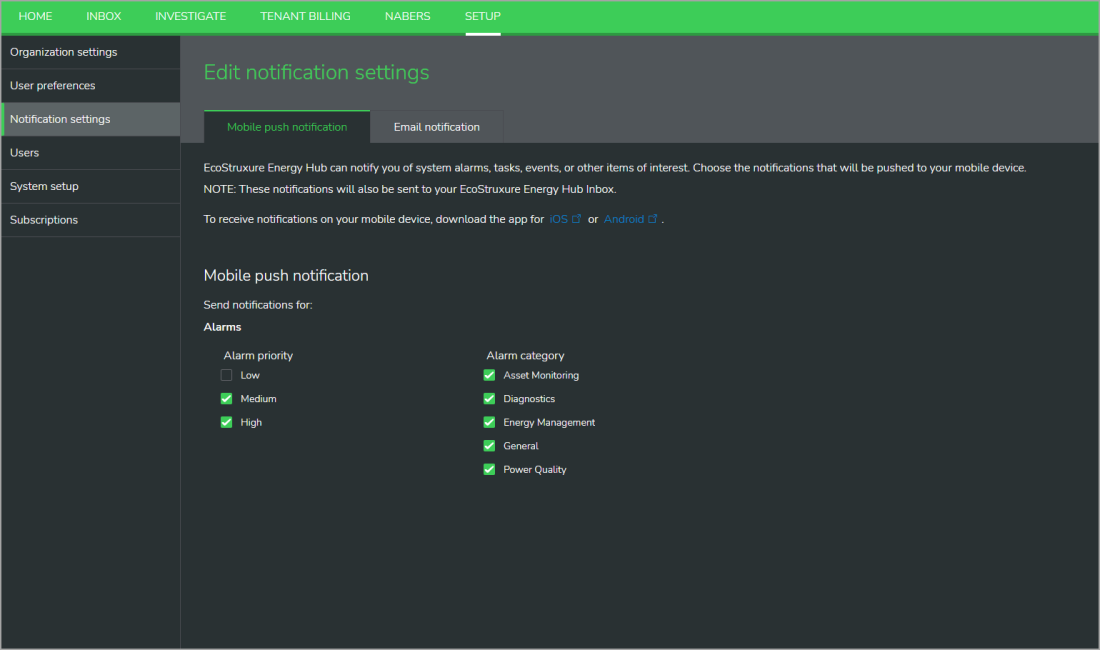
Users gives access to the user account management in Energy Hub.
Example
The following shows the manage users UI in dark mode:

System setup gives access to the configuration of the organization model, tenant management for tenant energy billing, and other system setup and configuration tasks in Energy Hub.
System setup (regions) example
The following shows the system setup UI for adding regions and sites in dark mode:
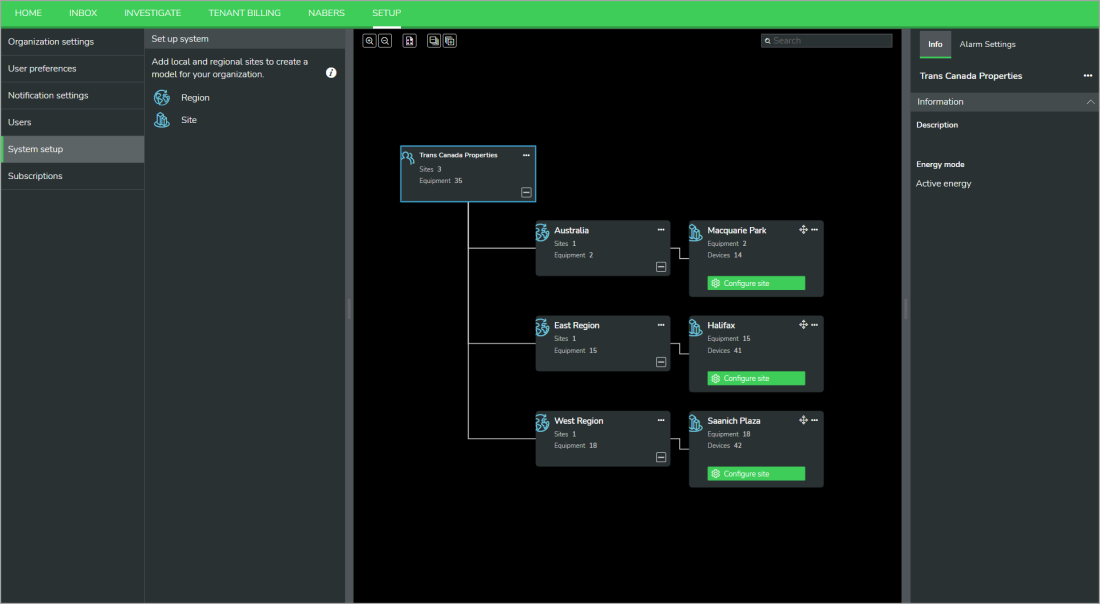
System setup (sites - Asset view) example
The following shows the system setup UI for configuring the asset model for sites in dark mode:
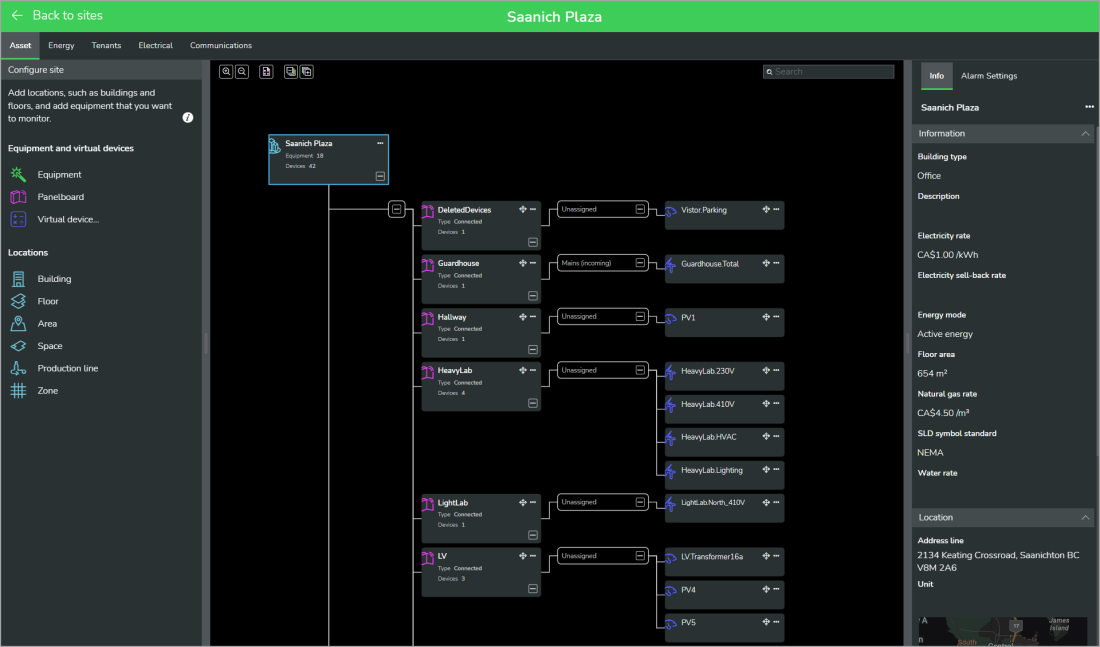
System setup (sites - Energy view) example
The following shows the system setup UI for configuring the energy model for sites in dark mode:
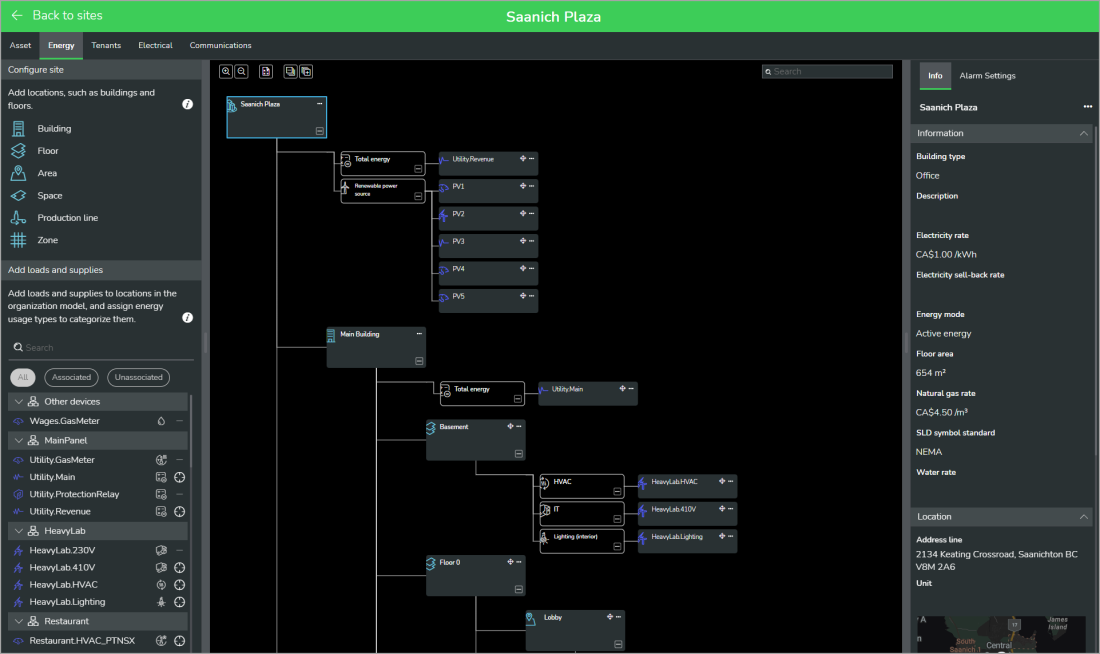
System setup (sites - Tenants view) example
The following shows the system setup UI for configuring tenant billing in dark mode:
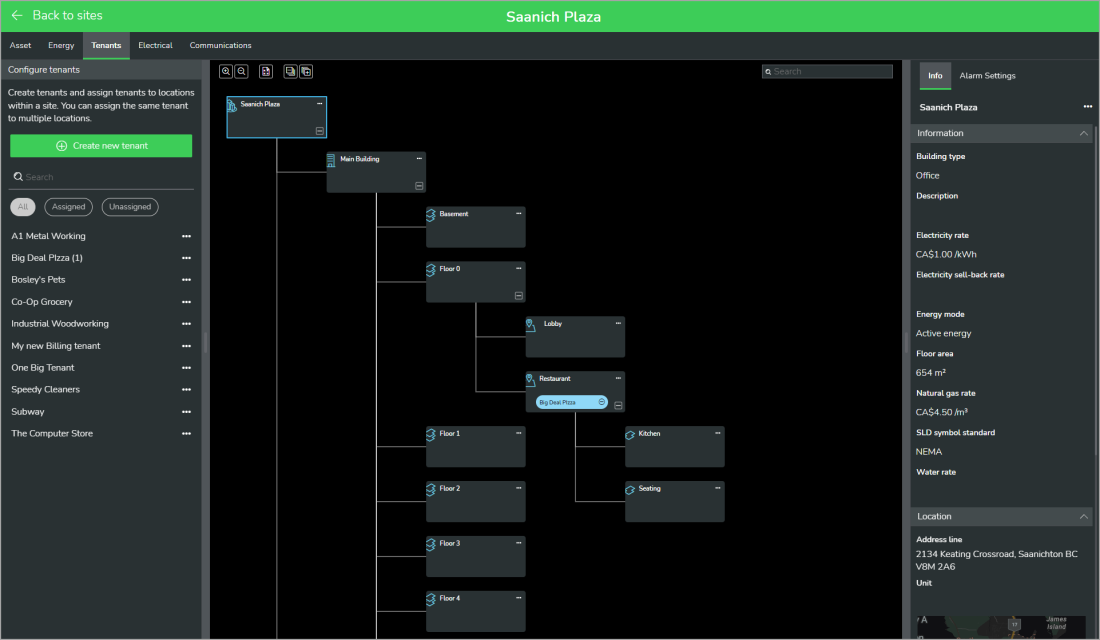
System setup (sites - Electrical view) example
The following shows the system setup UI for configuring single-line diagrams for sites in dark mode:
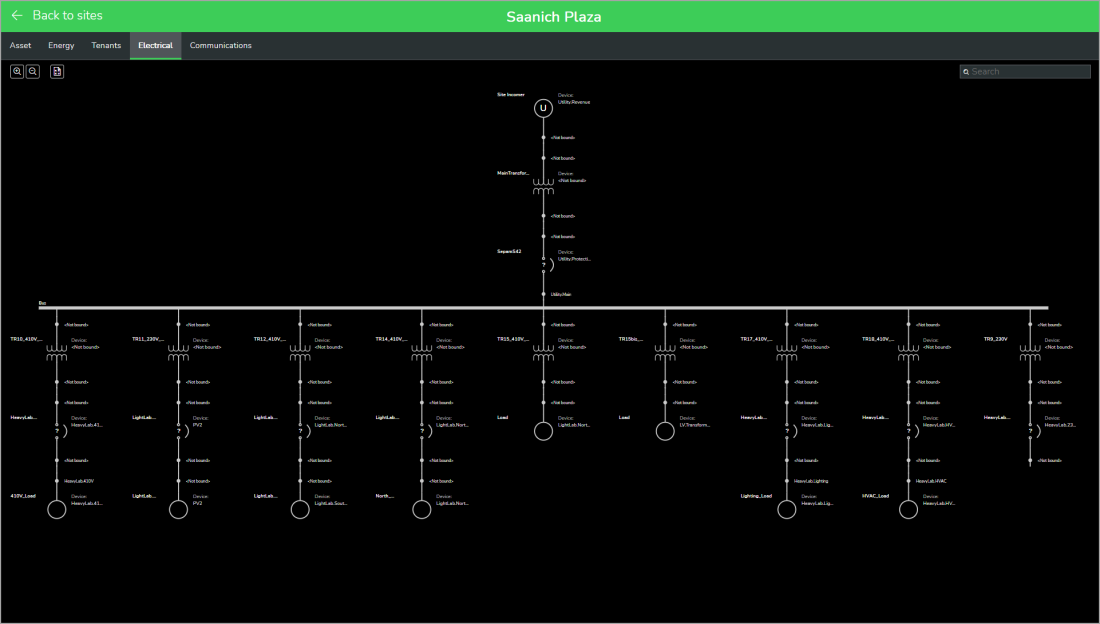
System setup (sites - Communications view) example
The following shows the system setup UI for adding communication gateways for sites in dark mode:
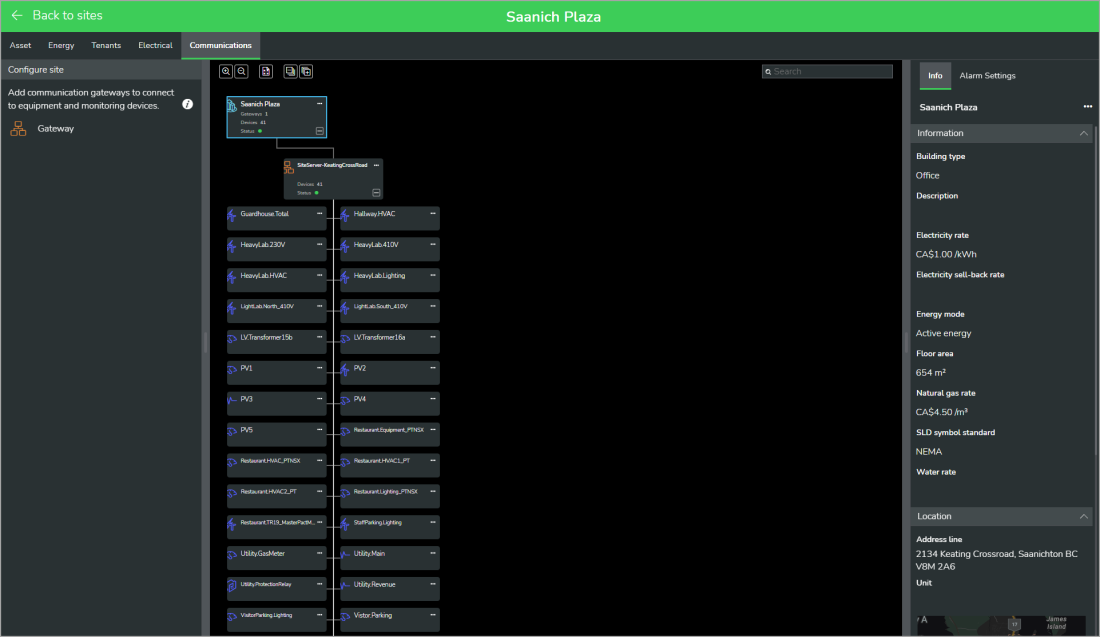
Subscriptions gives access to the feature plan subscription management in Energy Hub.
Example
The following shows the manage subscriptions UI in dark mode:
